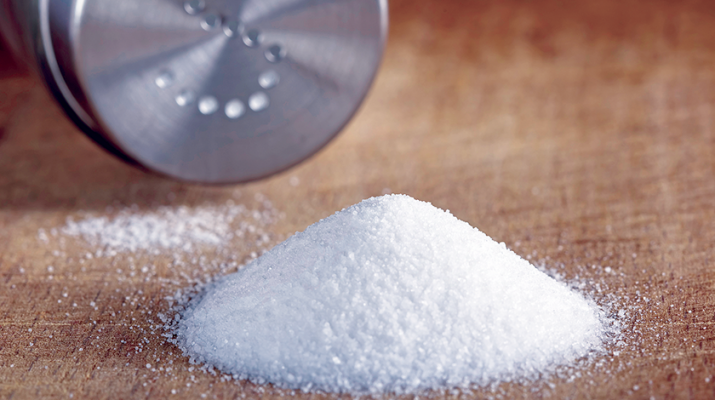High sodium intake can mean trouble for blood pressure
By Kristen Raab
 By now, we know that we should limit our salt intake. However, simply not adding salt to our meals is not enough.
By now, we know that we should limit our salt intake. However, simply not adding salt to our meals is not enough.
Sodium is present in many of the foods we eat daily, so we must be observant of nutritional labels and make smart choices based on sodium content.
The American Heart Association recommends healthy people have no more than 2,300 milligrams of sodium per day. Perhaps that sounds like a lot, but it is actually only one teaspoon of salt. Cynthia L. Jones, chief medical officer at the Regional Primary Care Network in Utica, recommends we strive for no more than 1,500 milligrams of sodium per day.
Don’t be fooled by the various names of salt either. Sea salt is not any different than table salt in terms of how it impacts us.
“The body still sees this as salt and reacts to it in the same way as it does with table salt,” she said.
Salt leads to water retention that places increased pressure on the blood vessels and increases overall blood pressure.
Nearly 68 million adults in America have high blood pressure. Even if a person is on blood pressure medicine, blood pressure can still be elevated.
Often this is because of eating too much salt. The National Kidney Foundation recommends limiting sodium intake to 2,300 milligrams per day.
The Centers for Disease Control report that reducing sodium reduces blood pressure within a few weeks for most people.
Food should ideally contain no more than 300 milligrams of sodium per serving,” Jones said.
Bread is a surprising source of salt. If a typical slice has 300 milligrams, but you eat two slices, you have consumed 600 milligrams in part of your meal.
If you happen to add deli meat to your sandwich, you may go over your daily intake in one meal!
Make sure of your portions
Being aware is one step you can take; double check labels to make sure you are eating the proper serving size.
For example, a frozen dinner may be one serving; however, in a bag of frozen food, a serving may be 1/2 cup.
Other staples of the American diet contain too much salt as well. These foods include but are not limited to pizza, tacos, pretzels and cheese. If you are eating these foods on a regular basis, or even if you have some cheese on your salad and then later snack on pretzels, you are likely consuming too much salt.
If you decide to dine out, check out nutrition facts. These are available online, and restaurants are starting to include them on menus. Jones says to be aware that salad dressing may have a lot of salt. Fruit is now often offered as a side, and you can request that your meal be made with no salt added in many restaurants.
For people who have consumed sodium for years, it is not easy to completely cut it out. Jones suggests first removing the saltshaker.
There are quite a few lower sodium foods available. However, Jones reminds us to be aware that those products still contain sodium.
No-salt-added products are best. Read nutrition labels and cook foods at home. “Choosing fresh meat and vegetables that you prepare at home makes a big difference,” Jones said. “You can choose fresh herbs rather than salt to flavor them.”
The CDC recommends the dietary approaches to stop hypertension-eating plan for people who need to lower their blood pressure.
It is a diet low in sodium cholesterol and fat, particularly saturated fat. It emphasizes the need for fruits, vegetables, potassium, fiber and low-fat dairy. Visit www.cdc.gov/salt/fact_sheets.htm for more information on reducing sodium, the sodium content of your food, and why this is such an important change to make.

